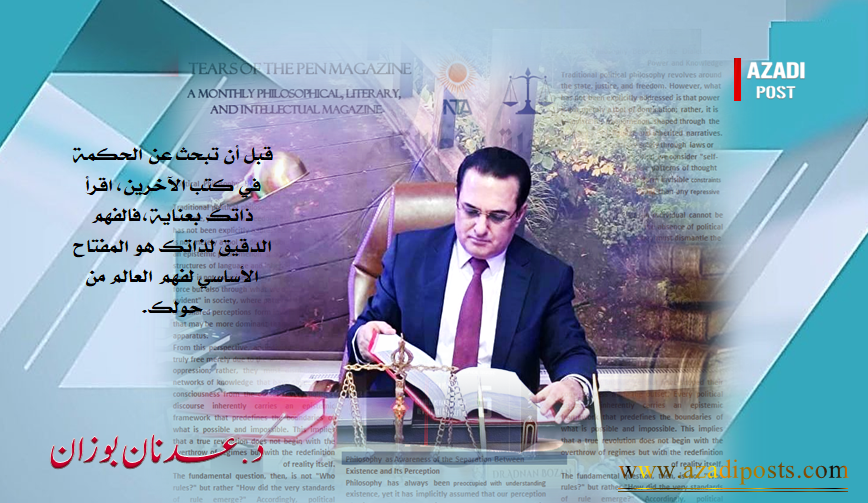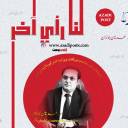Reengineering the Middle East: Dismantling Regimes and Rebuilding Influence
- Super User
- مقالات سياسية
- Hits: 2730

By Dr. Adnan Bozan
In the corners of maps, nations do not sleep—they shift and flicker like flames beneath the ashes of geography. Anyone observing the Middle East in recent decades will recognize that what is happening is not a series of isolated crises, but a slow-breathing, meticulously crafted project. It is articulated in a language spoken only by the great cartographers of power: the language of fragmentation, followed by reconstruction, according to a multilayered model of control.
The world is not governed by UN speeches, but by the balance of interests and the calculus of force. The fate of the Middle East—with all its sectarian, ethnic, and political mosaic—was sealed when the map itself became an "engineering issue" decided in the chambers of strategic operations.
The Hidden Project Behind the Words
Since Condoleezza Rice announced the “New Middle East,” it became clear that the goal was not merely about alliances or diplomatic settlements. It was about recalibrating the geopolitical and political layout of the region under new parameters. The aim wasn’t only to change regimes but to unravel the internal fabric of states and transform political entities into flexible units—mergeable, fragmentable, or neutralizable.
The goal was not to spread democracy, as proclaimed, but to create voids ready to be filled, identities fit for management, and conflicts ripe for exploitation. America does not enter a land unless its social fabric is divisible, its decision-making centers eroded, and its traditional political structures outdated.
Three Pillars to Be Removed
The geopolitical engineers in Washington and Tel Aviv—with their sharp strategic senses—identified three powers as obstacles to this grand design. These powers were not allies, yet they were deeply rooted in the consciousness of their peoples and exerted transborder influence.
- The Syrian Regime: From Statehood to Hollow Structure
Regardless of moral assessments of the Syrian regime, it was—within regional power equations—a center of resistance against any attempt to dismantle Arab identity or turn Syria into a corridor for realigning alliances.
But the war imposed on the country, and the transformation of its conflict into a theater for regional and global score-settling, turned Syria into a laboratory of structural devastation: society, identity, infrastructure, even collective memory.
And when the state collapsed, the vacuum was not left to chance. It was filled with fragile assemblages of de facto authorities, militias, and temporary alliances. Syria was transformed from a “state” into a “land managed from abroad.” Everything now is shaped outside its borders: from war decisions to constitutional outlines.
- The Iranian Regime: The Twin Thorn in the Project’s Side
Iran—with its mix of religious ideology and imperial breath—has long been a constant headache for American strategists. It operates not merely through the logic of the nation-state but through a “missionary nation” logic, viewing itself as guardian of regional balances—especially in Iraq, Syria, Lebanon, and Yemen.
But the U.S.–Israeli project was not blind to this. Iran was first besieged economically, then diplomatically, then through media narratives—before the door was opened to internal upheaval: protests, tensions, sectarian unrest, and the exploitation of social and environmental crises.
The aim is not simply regime change, but the creation of a “New Iran”—one that relinquishes its nuclear and regional ambitions and joins a political club that, even if temporarily, facilitates the recalibration of the Middle East.
This “useful Iran” is not a democratic one. It is a shrunken state, withdrawn into itself, abandoning expansion in exchange for survival.
- The Turkish Regime: The Ally Approaching Geographic Betrayal
Turkey, born as a secular state atop the Ottoman ruins, has gradually morphed into a symbolically neo-Ottoman project under Erdoğan’s leadership. It has become a formidable power in the heart of the Middle East.
Although a NATO member, it has not always aligned with U.S. interests—particularly regarding northern Syria, the Kurds, and Turkish ambitions in Central Asia.
But the American project has little tolerance for independent actors. Turkey—having capitalized on the Arab Spring earthquakes to extend its reach—came to be seen in the West as a “power that must be tamed.” Not through coups, but through soft wars, economic pressure, political attrition, and possibly the ignition of ethnic fault lines (Kurdish, Alevi, nationalist).
The goal is to create a “Post-Erdoğan Turkey”—not merely a functional state, but a neutral actor, relinquishing imperial dreams and returning to its “natural size” within externally drawn balances.
Between Interests and Destinies: Who Draws the Middle East?
The question is not: “Who’s next?” but: “Who owns the map of the new world?” The conflict is no longer just about land—but about meaning: the meaning of statehood, sovereignty, and peoplehood.
In the Middle East, every country has become a re-foundation project. Every regime is the remnant of a bygone order. Every resistance is cast as an existential threat.
But does that mean the end of peoples? No. Peoples—despite all erosion—are not built only by borders, but by memory. And memory that passes through fire becomes more resilient.
States may be reshaped, but consciousness is not so easily reconstructed. This, the strategists have yet to grasp.
Conclusion: When Maps Become Gravesites
The Middle East is not merely being transformed—it is being erased and redrawn anew, by hands that do not belong to it and do not understand its spirit. What’s happening is not a “march toward democracy,” but a profound retreat from sovereignty and from the presence of peoples in shaping their own fate.
The project led by Washington and Tel Aviv is ambitious, but it is also riddled with contradictions. The world can no longer sustain grand designs built on weapons and the dismemberment of identities.
The project may succeed temporarily. Regimes may fall. States may be drained. But what cannot be killed is the question:
Who are we? And why are we being reshaped by hands that do not know us?
The “New Middle East” is not a destiny. It is a battle of consciousness— a race between those who draw the maps… and those who refuse to be just a line within them.


